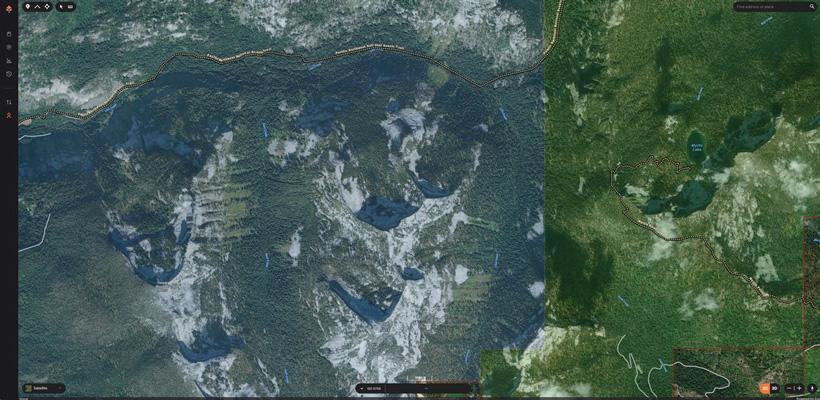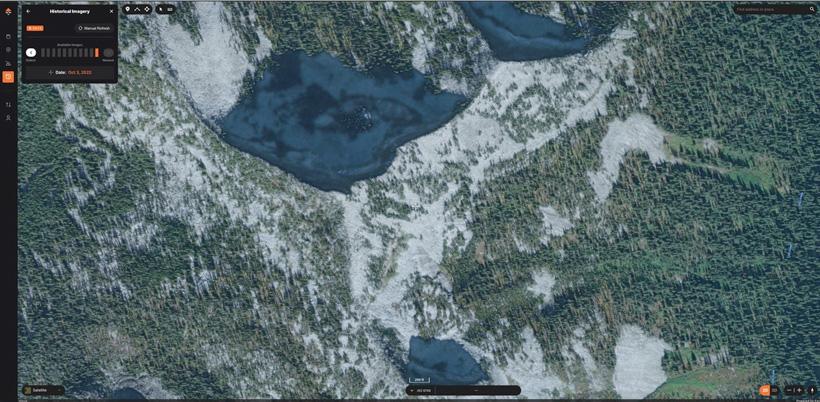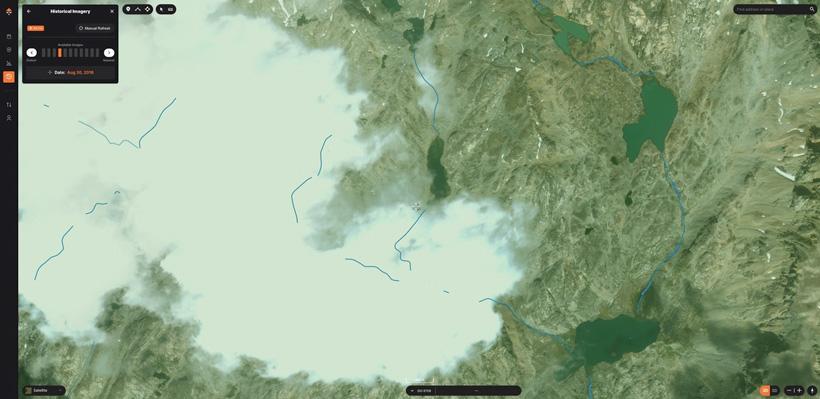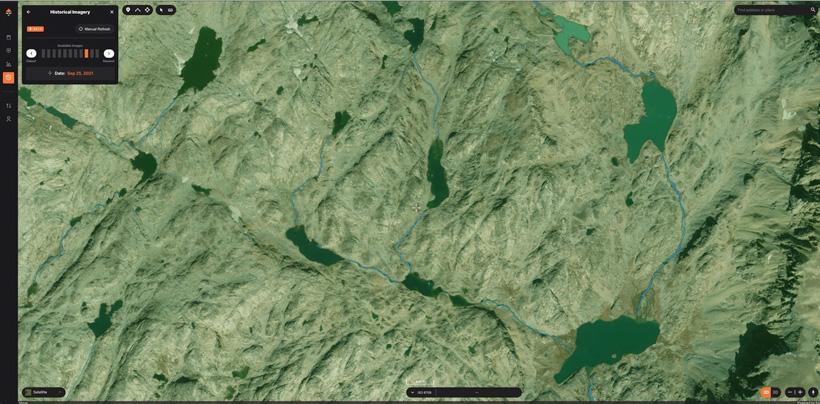







We recently released Historical Imagery on the desktop version of GOHUNT Maps, and Brady Miller kicked off a series showcasing some of the ways we use this killer new feature to get ready for the season. As he mentioned, the opportunities and ways you can use Historical Imagery are nearly limitless. These articles are not the end all, be all; however, they serve as examples of how powerful Historical Imagery is and how many different ways you can use it.
Living in Montana, I love to use Historical Imagery to look at snow in the mountains. Knowing when the snow starts to fall in your hunt area can provide you with the knowledge you would not be able to see until you put boots on the ground in your area. It might go without saying, but snow — and weather in general — during the fall can be unpredictable. That’s important to remember when using Historical Imagery to evaluate snow in your hunting area.
I primarily use Historical Imagery to check the snow when going on a hunt in the mountains in an area I have never been to. This has been great for me here in Montana when chasing mule deer and late-season elk in November. Below, I will cover not only what I like to look for when looking at snow, but why I use it for that. This season, I am headed to Idaho to hunt deer in mid-October and am going to an area that I have never been to. Thanks to Historical Imagery, I have a really good idea of what I can expect when I get there.
The best information that snow in Historical imagery provides me is how early I can expect to see snow at the location I’m going to. As stated above, just because it did or did not snow in previous years does not mean it will be like that again. I have hunted the same area on the same day over multiple seasons and have seen 70-degree temperatures as well as knee-deep snow. You never know what the mountains will throw at you, so you must use your best judgment and look at the Historical Imagery from multiple years to gauge whether there will be snow or not.
Having a good idea of when snow will start to fall and accumulate can tell you many different things including, but not limited to:
One of my biggest goals when hunting is figuring out where I can go that most people likely will not. Learning when the first snow will drop helps you figure out how late you can get to your area before it gets pounded with too much snow. On the flip side of that, I like to use Historical Imagery to get an idea of how much snow there can be late in the season. In my experience, most people will not push too far into the backcountry in snow; however, large, mature bucks love the seclusion. For the hunter willing to put in extra work and do some post-holing, knowing what the snowpack will be like towards the end of your season can put you right in a buck or bull's bedroom when they think they are all alone.
In many locations on satellite imagery, you’re unable to see anything because of clouds. It’s more common in the mountains since the weather is so unpredictable.
With Historical Imagery, that problem is virtually gone. If you’re trying to scout your area and you see nothing but clouds on the imagery, it’s as simple as turning the Historical Imagery on and cycling through the images until you find one without clouds.
Another great way to use Historical Imagery is for removing snow from the area you're looking at. Sometimes images of mountains could be covered in snow, and now you can just back date the imagery date to find a time when there is no snow on the mountain you're e-scouting!
Make sure to read Brady’s article on using Historical Imagery for burn areas and keep an eye out over the next several weeks as we continue to share more ways to use it. All of the articles we have published on Historical Imagery can be found here.
To see the true power of Historical Imagery, you have to get onto your computer and try it yourself. Snow can make or break a hunt, but as long as you are prepared, you can find yourself in a dream situation really quickly. Snow makes tracking, blood trailing and glassing easier — just to name a few. Having a good idea of whether or not to expect snow can help as you prepare for your hunt. Remember that the mountains can be unpredictable regardless of what you see in Historical Imagery or what the forecast says. As long as you do your research and plan for as much as you can control, they can also be the best place to hunt.
If you’re not familiar with GOHUNT, check out the link below to learn more about everything we cover to make your e-scouting and hunting efforts more successful. You can find everything you need to have the best season ever with a GOHUNT membership. You can also check out our maps and research tools on a 7-day free trial.
Whether or not you can get your truck there;
What gear you need to have;
If the animals are still in the area;
Will other people be there; and
Much, much, much more!